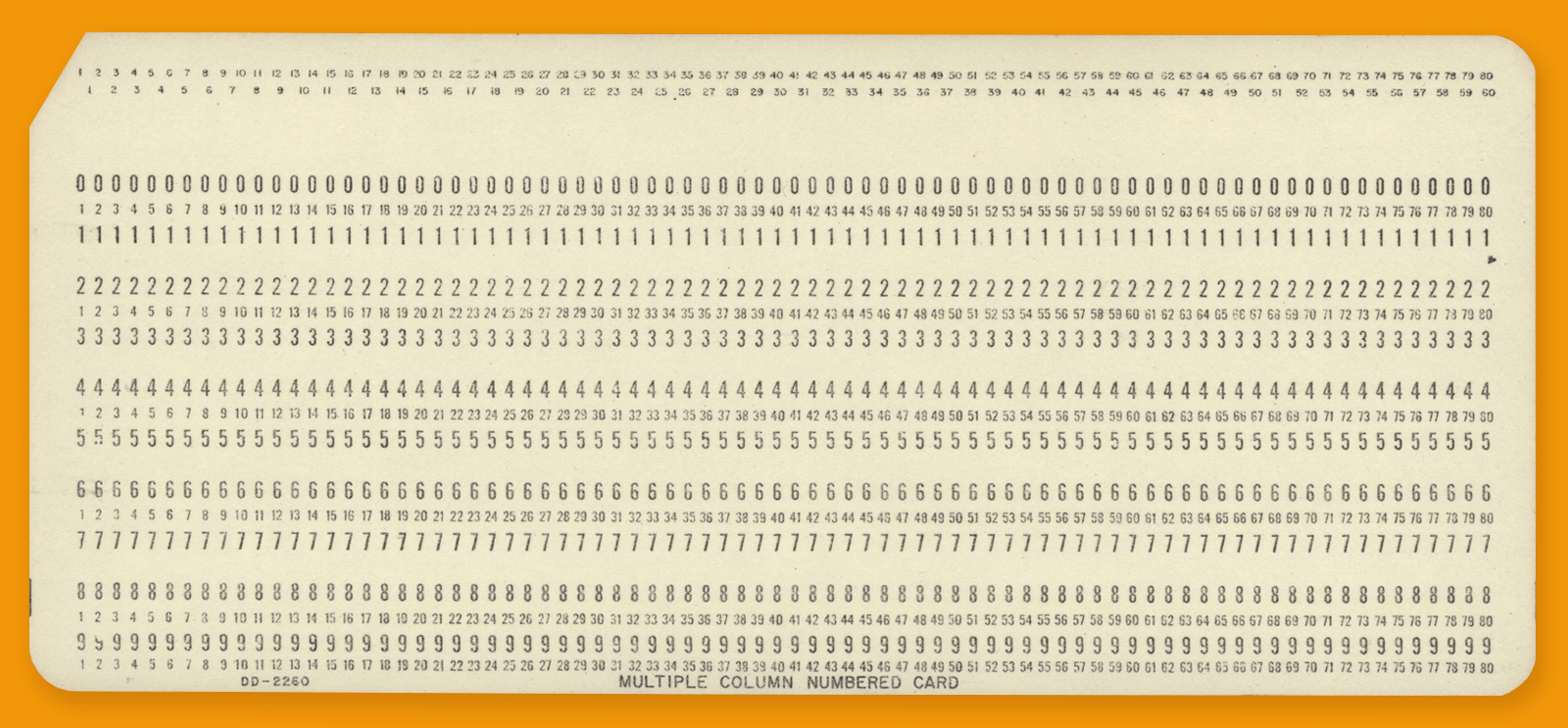
The Jacquard loom and its punch-card design laid the foundation for computer technology that ran on punch cards (above), such as Alan Turing’s Pilot ACE, completed at National Physical Laboratory in 1951 and in operation for about five years. (iStockPhoto)
How an automated loom inspired the earliest computer inventors.
In 1801 French weaver and inventor Joseph Marie Jacquard debuted a “programmable” automated loom* at an industrial exhibition in Paris. What became known as the Jacquard loom was actually an attachment controlled by a chain of punch cards, in which one complete card dictated one row of a pattern. A hook and its corresponding thread were raised or lowered depending on the code, creating intricate patterns that could be quickly replicated by a single weaver. Traditional looms required a weaver and an assistant.
The Jacquard loom was one of many automation advancements that marked the Industrial Revolution, transforming the European textile industry. It also set the stage for the invention of computer technology, as noted by School of the Art Institute MFA student Dylan Fish and UChicago mathematics PhD candidate Daniel Johnstone, SM’13, during their May collaboration grant presentation, which explored computational concepts through cloth production.
In the early 19th century, English mathematician Charles Babbage designed a calculating machine—the Difference Engine. But it was his follow-up design, the 1834 Analytical Engine—based on Jacquard’s punch cards—that introduced computer programming.
Never built in his lifetime, his engines laid the foundation for general-purpose computers, largely thanks to the English poet Lord Byron’s daughter, Ada Lovelace. She had mathematical training and helped popularize the idea that Babbage’s Analytical Engine could perform step-by-step calculations (programs) and move beyond numbers to manipulate symbols using rules.
Also inspired by Jacquard’s punch cards was US Census Bureau staff member Herman Hollerith, who was looking for a more efficient way to assess the country’s population. In 1884 he filed a patent for a device that rapidly read information encoded in holes punched on paper, which reduced the census process from eight years to one. Hollerith founded the Tabulating Machine Company, which eventually became IBM.
Fast forward to 1951, when the UK’s National Physical Laboratory completed the Pilot ACE (Automatic Computing Engine), a general-purpose computer based on English mathematician Alan Turing’s design. The Pilot ACE used Hollerith 80-column punch-card input and output equipment, with the input device running at 200 cards per minute and the output device at 100 cards per minute.
Today’s computers no longer use punch cards, having evolved in leaps and bounds. “As the exponential curve on one technology’s advancement dies out,” says Michael Franklin, the Liew Family Chair of Computer Science, “another technology takes over.”
With the exploration of quantum computing, tomorrow’s computer technology likely won’t even be constrained by the laws of classical physics. And it all started with an ambitious weaver.
* Jacquard’s was not the first automated loom—just the first to be successfully adopted by the textile industry. The first loom using a punched-paper technique was designed around 1750 by French engineer Jacques de Vaucanson, who is also credited with inventing the world’s first robots.
